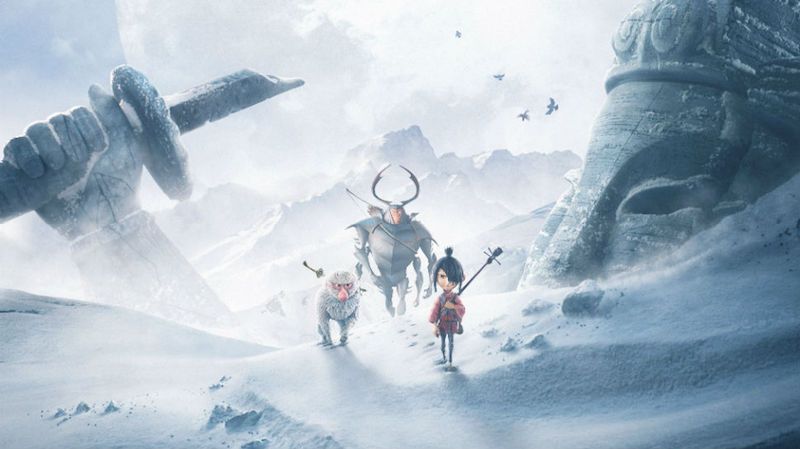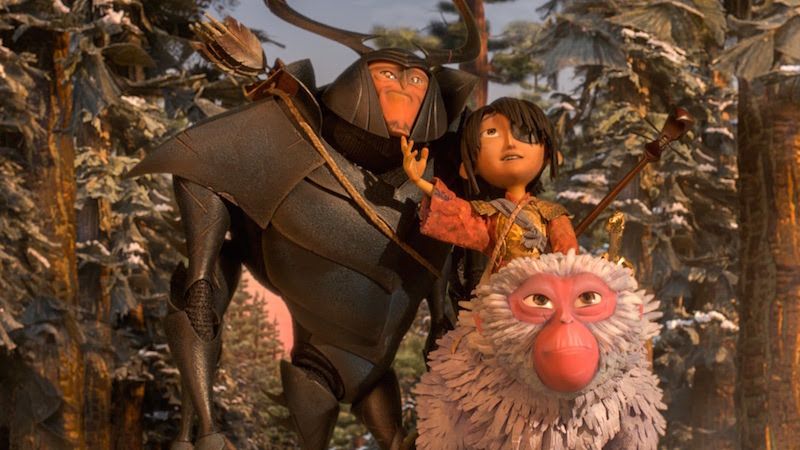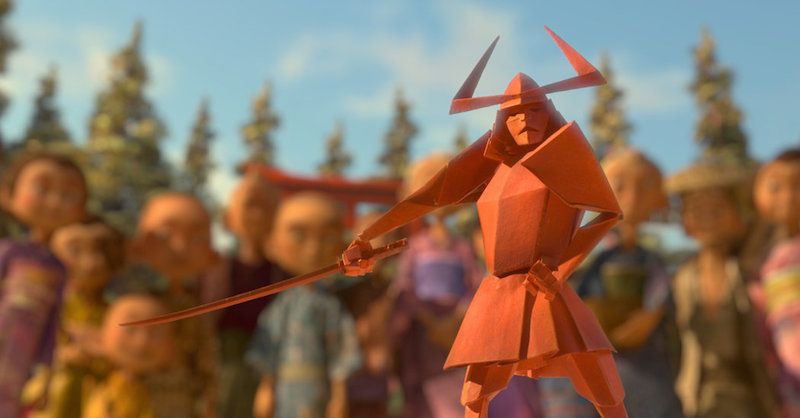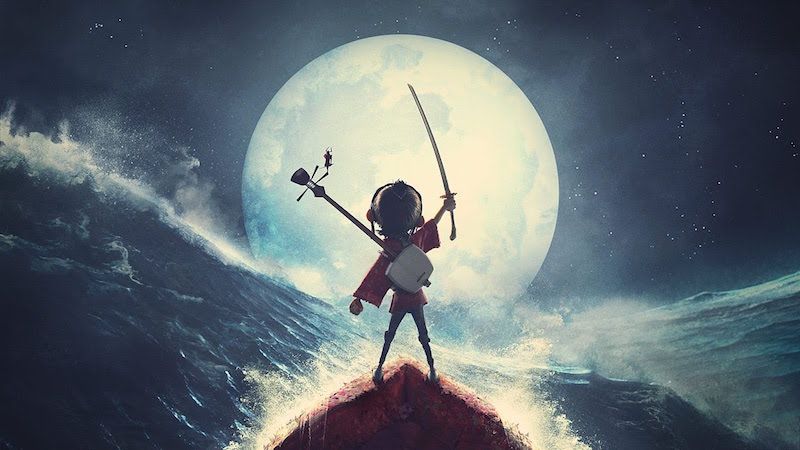If like me, you try to choose carefully when it comes to which movies make sense to see in a theater where it costs you a year’s college tuition for a family of four — and then, decide which movies seem worth forking over the extra few bucks for the 3D experience — I highly recommend the extraordinary Kubo and the Two Strings.
This exquisite stop-motion feature from Laika Entertainment and first-time director Travis Knight comes to life so spectacularly on the big screen I would even see it a second time, and that’s saying something.
The story of a young, one-eyed Japanese boy on an Odyssean-level quest of his life to unravel the mystery of his deceased father, the nearly catatonic mother whom he supports, and the mysticism that seems to surround them, absolutely riveted my children from the opening scene.
Origami comes to life, deceased ancestral spirits offer guidance, boats are fashioned out of magic and fallen leaves, and the mythological story of the hero samurai versus the evil Moon King that Kubo tells in the town square to earn money — well, maybe they’re not really myths at all.

The story arc is less linear than most big-release animated children’s films from studios like Pixar or Dreamworks, and is filled with characters more complex, quirky looking, and decidedly less two-dimensional (no pun intended) than most American characters. It feels more in the spirit of a Studio Ghibli film or Hiroyuku Okiura’s A Letter to Momo — or more familiarly, films like The Book of Life or The Boxtrolls which are absolute favorites in our home.
I also happen to admire a male lead character who exhibits more complex traits than the traditional “boy” heroes we’re used to seeing in kids’ films. Kubo is a fighter and a caregiver. He’s a storyteller and musicmaker. And he sure loves his mom.
The script itself is sophisticated but accessible, using little annoying exposition that filmmakers often use to talk down to young viewers. It’s nice to find the rare children’s film that respects its audience, essentially saying to kids, you can handle this — the same way Kubo is discovering that he can handle all the challenges thrown his own way.
The storytelling overall truly respects their ability to process both the big picture of the plot and the nuances of the themes and piece it all together. Even if they don’t have enough Japanese cultural references to keep them from whispering why is that happening? What does that mean? in your ear throughout the film.
Just assure them that if they sit tight, all will become clear in the end.
(Or hey, you can always hit Wikipedia when you get home and explain the concepts of ancestral veneration, the Yurei spirits of Japanese folklore, and Bon lantern ceremonies.)
I do have to warn that if you’re bringing younger kids who might be easily frightened, know there are a few scenes that might require eye-squeezing and head-burrowing, especially on the big screen. Two aunts from the spirit world (voiced amazingly by Rooney Mara) are more eerie than scary — something Neil Gaiman or Tim Burton might conjure up. There are also some freakishly massive disembodied eyeballs that try to hypnotize Kubo underwater, and a fierce battle with a giant skeleton who has swords embedded in his skull — though come to think of it, that sounds more gross than I described it. It’s more an Indiana Jones/Sword in the Stone situation than a Game of Thrones one. But the action is intense.


It’s not all darkness and conflict with dangerous creatures, though. As Kubo gathers a Wizard of Oz style crew of motley characters to accompany him on his journey, you’ll find plenty of humor and wit to break up the action — particularly in Matthew McConnaghey’s voicing of the offbeat samurai warrior turned cursed, human-sized beetle. (I swear he’s channeling Will Arnett through some of it.) Charlize Theron co-stars as Monkey, Kubo’s sherpa and protector and voice of reason yin to Beetle’s yang. And there are some memorable supporting characters including Ralph Fiennes as the evil Moon King, Rooney Mara as I mentioned, and Brenda Vaccaro and George Takei as two of the townspeople who bring the “real world” characters of the film to life.
Now if I have one complaint, it’s that the main characters, all of whom are Japanese, are voiced by Caucasian actors. I noticed right away that Asian voice actors were relegated to minor roles, and I don’t know if that’s a matter of studios believing they need so-called A-listers to draw an audience, or casting that could simply try harder.
My totally unsolicited advice: Try harder.
But overall, this animation geek is thrilled to find yet another studio that I predict will set the bar higher for subsequent animated features both in terms of story and production. I also love having more evidence that an animated film doesn’t require a big song-and-dance number and a national Happy Meal product tie-in to create legions of fans of all ages. And Kubo, no doubt, will have lots and lots of fans. Like me. And my two girls, who both declared it “a really really good movie!’

As for that 3D expense? I’ll be honest, I tend not to spend the extra money. I generally find it an unnecessary gimmick. And in the case of Kubo, at first I was wondering why it was in 3D at all, considering there were no OMG the dragon IS RIGHT IN THE AUDIENCE! moments. But after some time passes, you’ll realize the 3D brings to life the extraordinary dimensionality of the animation.
In other words, it doesn’t put the film into the audience — it puts the audience into the film.
If more filmmakers crafted films that were worthy of 3D technology, I might be more inclined to spend the few dollars extra for the experience.
Oh, and stay til the end. You’ll catch a cool stop-motion sequence about the making of the skeleton. Plus, you get to hear Regina Spektor’s cover of While My Guitar Gently Weeps over the credits. How’s that for an ending?
Catch Kubo and the Two Strings in theaters while you can. Visit Fandango for times and locations. Thanks to the folks from RealD for providing tickets.





Thank you; that sounds like one to catch. I think you mean that if you have one complaint it is that none of the main characters are voiced by Asian actors, right?
Thanks for catching the error! Fixed.